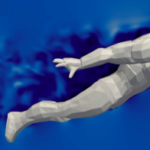what is digital prototyping
In a typical industrial application (manufacturing or common engineering application), a product or a system must be tested with a prototype to test whether it is failed in a certain condition or has a defect and maybe become a potential risk in the future. Producing the defected product or system can be a huge loss in a manufacturing company if they invested in costly dedicated machines and mass-produced the products or in the worst scenario they can lose life for example in aircraft production or building project.
The commonly used prototypes in industry are physical prototype, and typically a full scale model. For example, a bolt company wants to mass produced a certain model of bolt. Before the mass produced it, they will make a sample with identical material and geometry then test it in certain loads condition to proof the bolts are pass the standard needed then mass produced it after the requirements are proven. This full scale model is realistic in terms of operational feasibility and cost.

But, what if a company wants to develop a rocket, or aircraft? this kind of project will be very costly if we built the full-scale prototype, and become very risky to launch it even with professional pilot or operators. Another example, if a racing car company wants to try their product downforce, they will risk life of the driver if the racing car failed produce a proper downforce at unknown limit.
One of the well-known methods to “reproduce” the “full-scale” product is by using a computer program. We can build an identic car model with similar detail using Computer-Aided Design (CAD) software, then export the geometry to simulate its aerodynamic performance (for example the downforce) using Computational Fluid Dynamics (CFD) software, if we want, we can export the structural part and gives it a load to simulate the stress and deflection of that part using Finite Element Analysis (FEA) software. The above software or procedures are called digital prototyping. We don’t even need a physical product to obtain their characteristics.

From the computational fluid dynamics (CFD), for example, we can calculate the downforce, drag, or even the streamlines to analyze the aerodynamics characteristic and we can alter the geometry immediately and then test it again to obtain new results. This is a very flexible process and no need for physical and fabrication costs. Digital prototyping software commonly integrated with Computer-Aided Manufacturing (CAM) software which is connected to your “digital” model into physical fabrication such as CNC machine or 3D printing.
Not just for new product development, digital prototyping also plays an important role in perfecting an existing product. For example, a connecting rod has been designed by a company with a certain specification and meets certain strength criteria, but after the product launched in one year, the product failed with fatigue failure but the root cause was unknown. That company can utilize the Finite Element Analysis (FEA) to predict the root cause by analyzing the detail of stress distribution and makes the prediction more purposefull.

To read other articles, click here.

aeroengineering.co.id is an online platform that provides engineering consulting with various solutions, from CAD drafting, animation, CFD, or FEA simulation which is the primary brand of CV. Markom.




Leave a Reply
Want to join the discussion?Feel free to contribute!